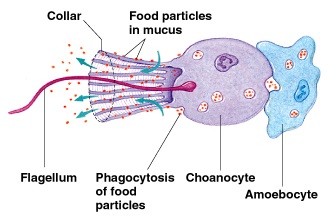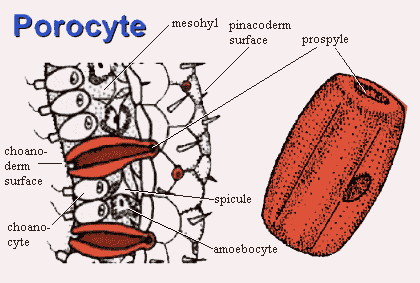What are the functions of sponges' specialized cells: archaeocytes, choanocytes, porocytes?
1 Answer
There are several cells in body of sponges and they are responsible to perform different functions.
Explanation:
Archaeocytes are totipotent cells which can differentiate into other cell types within the body of sponge. Moreover choanocytes also give rise to germ cells.
Choanocytes are flagellated cells which line the spongocoel and form the so called 'choanoderm': the layer represents endoderm of a diploblastic poriferan organism. The flagella help in creating a unidirectional flow of water around the body of sponge. Choanocyte also has a collar made of microvilli. These cells capture microcopic food particles. Digestion is also intracellular, taking place within choanocyte.

Porocytes are unique, elongated, tubular cells . Each porocyte allows water to flow inside the spongocoel from surrounding aquatic habitat. The pore through which water flows in is called ostium (singular). There are innumerable ostia (plural).

There are several other cells in Porifera. Ectodermal or outer layer of sponge body is made up of pinacocyte cells. Then there are spongocytes which secrete skeletal material. Contractile myocyte cells are present around osculum, a large pore for throwing out water from spongocoel.
